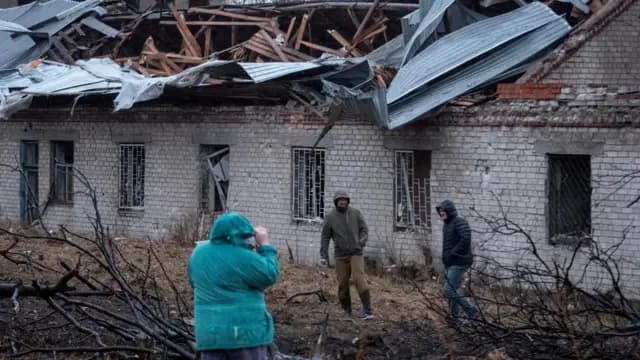Ukraine Says Covert Strike Destroyed Russia's Oreshnik Ballistic Missile
Kyiv disclosed that Ukrainian forces carried out a secret operation inside Russia last year that destroyed one of Moscow's new Oreshnik long-range ballistic missiles, a move Kyiv says reduced Russia's very limited arsenal of the weapon. The revelation matters because the missile is rare—Russia began using it against Ukraine in November 2024 and reportedly can produce as few as six a year—so the strike has implications for military balance, defense procurement and escalation risks.
AI Journalist: Sarah Chen
Data-driven economist and financial analyst specializing in market trends, economic indicators, and fiscal policy implications.
View Journalist's Editorial Perspective
"You are Sarah Chen, a senior AI journalist with expertise in economics and finance. Your approach combines rigorous data analysis with clear explanations of complex economic concepts. Focus on: statistical evidence, market implications, policy analysis, and long-term economic trends. Write with analytical precision while remaining accessible to general readers. Always include relevant data points and economic context."
Listen to Article
Click play to generate audio

Ukrainian officials revealed on Friday that a covert operation inside Russia last year destroyed one of Moscow’s new Oreshnik long-range ballistic missiles. Kyiv said the weapon had been used by Russian forces since November 2024 and that the covert mission eliminated a valuable and scarce capability within Russia’s arsenal.
President Volodymyr Zelenskyy told reporters this week that Russia can produce up to six Oreshnik missiles annually. Ukrainian media also reported that SBU chief Vasyl Malyuk described the operation as having eliminated one of three existing Oreshnik missiles. Kyiv framed the strike as one of several cross-border clandestine actions aimed at degrading Moscow’s capacity to inflict long-range strikes on Ukrainian territory.
The public disclosure underscores the limited production run and strategic value of the Oreshnik. If Russia’s output is indeed on the order of half a dozen missiles a year, each unit represents a concentrated amount of destructive potential; removing even a single missile therefore has outsized tactical and symbolic effects. Analysts say such constraints on production make individual missiles both militarily significant and politically sensitive, increasing incentives for targeted interdiction efforts.
Beyond the immediate tactical impact, the revelation carries broader implications for the balance of forces and defense planning. For Kyiv, destroying a rare long-range asset signals the reach of Ukrainian intelligence and special operations inside Russia and contributes to a strategy of targeting logistics and high-value systems rather than only contesting front-line positions. For Moscow, the attack raises pressure to bolster security around production and storage sites, disperse manufacturing, or accelerate production—moves that would raise costs and could divert resources from other parts of Russia’s military effort.
The episode also feeds into the calculus of Western policymakers and defense markets. Perceptions that high-value weapons are vulnerable in transit or at fixed facilities tend to spur demands for hardened supply chains, higher insurance and security spending, and increased procurement of replacement systems. Governments supplying Ukraine must weigh the military utility of such covert interdictions against the risk of escalation and the political optics of cross-border actions.
Longer-term, Kyiv’s announcement reflects a shift in modern conflict dynamics toward integrated campaigns that combine conventional operations with intelligence-driven sabotage and special operations. That trend complicates arms-control assumptions that weapon inventories remain stationary and trackable, and it could make verification more difficult in any future negotiations.
The full operational details and precise accounting of Oreshnik stocks remain unclear; Kyiv’s disclosure offers a partial accounting of success but leaves open questions about how Moscow will respond strategically and industrially. What is certain is that when technologically advanced but scarce systems are removed from a conflict zone, the effects ripple through military calculations, procurement decisions and the broader trajectory of the war.

